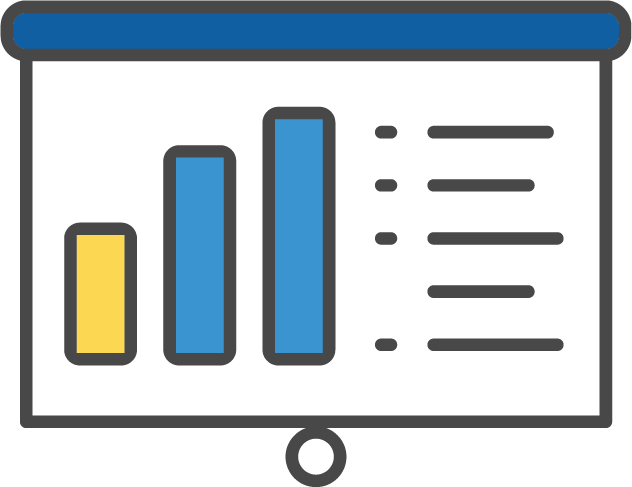Accounting for Distribution Companies: A Beginner’s Guide
What Is Accounting for Distribution Companies?
Accounting for distribution companies is the process of tracking inventory, managing supplier payments, and monitoring margins in a business where goods are constantly flowing through your warehouses.
As your business grows, trying to manage these moving pieces on spreadsheets can often lead to blind spots, from missed supplier payments and stock discrepancies to pricing errors that hurt profitability. This is why understanding how accounting for distribution companies differs from other industries is critical if you want to avoid cash flow surprises, pricing mistakes, and compliance issues that can slow growth.
In this article, we’ll cover what makes distribution accounting unique, how to track inventory accurately, and which systems can help you streamline your financial operations so your business stays prepared for growth while protecting your margins.
Partner with a reliable team that specializes in accounting for distribution companies
In This Guide...
What Makes Distribution Accounting Different?
Unlike service-based businesses, distribution companies require product-based accounting, and must account for inventory that’s in transit, manage landed costs like freight and customs, and align these details with accurate financial reporting to maintain cash flow visibility and protect margins.
For instance, purchasing inventory doesn’t just create a payable; it requires you to track that inventory’s cost, including freight and customs duties, until it’s sold. Storing inventory incurs warehousing costs, which, if not allocated correctly, can distort your margins. Shipping to customers involves freight-out costs, which impact your gross margin analysis if not tracked properly.
Without structured systems in place, distributors face challenges such as:
- Lack of real-time inventory
- Improper or inconsistent costing methods (FIFO, Weighted Average, LIFO)
- Reporting delays and inaccuracies
- Overlooked landed costs
- Poor handling of returns & damaged goods
- Cash flow management challenges
Obsolete inventory write-downs
The Importance of Inventory Tracking in Accounting
Inventory tracking is essential in accounting because it directly impacts how distributors value inventory, calculate cost of goods sold (COGS), and report accurate profits and taxes. Without precise, real-time tracking, it’s easy for distributors to misstate inventory balances, understate or overstate profits, and run into cash flow surprises that can harm the business.
Tracking inventory accurately also ensures that you can apply the correct valuation method, FIFO, LIFO, or Weighted Average, aligned with your financial strategy and tax planning. Inconsistent tracking or using the wrong method can create discrepancies in your financial statements, leading to compliance issues and misguided pricing decisions.
Why Distributors Need Special Accounting Software
While spreadsheets can handle the basics in the early stages, distributors need special accounting software once they begin managing higher inventory volumes and multiple sales channels.
As inventory moves across locations and landed costs, including freight and customs, affect true product margins, having a system that provides real-time visibility and accurate tracking becomes essential. Without it, pricing decisions, cash flow management, and demand forecasting can
suffer, leading to missed opportunities or costly mistakes.
Dedicated accounting and inventory platforms like QuickBooks paired with SOS Inventory, Zoho Inventory, or NetSuite allow distributors to:
- Track inventory and sales in real time
- Automate purchase orders and sales orders
- Manage multiple warehouses efficiently
- Allocate landed costs accurately across inventory
These tools reduce manual data entry errors, improve the accuracy of financial reporting, and give CFOs and owners reliable data for pricing, purchasing, and cash flow decisions.
What Is the Chart of Accounts for Distribution?
The chart of accounts (COA) for a distribution company is a structured system that categorizes every transaction, enabling accurate tracking of inventory, expenses, and margins. It’s the backbone of clear financial reporting, allowing distributors to see where money is going, analyze product line profitability, and make informed decisions without guesswork.
A well-designed COA for distributors typically includes:

A numbering convention with subset accounts for Inventory and Cost of Goods Sold (COGS)


Freight-out costs under OPEX (Selling Expense)

Warehousing expenses

Sales returns and allowances

Trade payables for supplier bills

COGS accounts for different product lines
Trade payables for supplier bills
Three Must-Track Metrics for Financial Health
Distributors should track key financial metrics to stay profitable and maintain operational efficiency. The right metrics help you catch issues early, guide purchasing and pricing decisions, and keep cash flowing reliably as you grow.
Here are three essential metrics to monitor:

Inventory Turnover = COGS / Average Inventory
A benchmark of 5–10 turns per year is often healthy, showing how efficiently you’re moving inventory and avoiding excess stock.

Gross Profit Margin = (Sales - COGS) / Sales
Indicates pricing effectiveness and cost control across your product lines.

Days Sales Outstanding (DSO) = (Accounts Receivable / Total Credit Sales) x Days
Measures how quickly you collect payments, helping you manage cash flow and reduce the risk of overdue receivables.
Regularly tracking these metrics helps distributors make informed decisions, align operations with financial goals, and ensure sustainable, profitable growth.
How Are Cost of Goods Sold Calculated?
Cost of Goods Sold (COGS) for distributors can be calculated using this formula:
Beginning Inventory + Purchases - Ending Inventory = COGS
This shows the direct costs of acquiring and preparing goods for sale, including the purchase price, freight-in, and, in some cases, warehousing costs directly tied to storing goods before sale. It does not typically include freight-out or selling expenses, which are accounted for separately.
Accurate COGS tracking is crucial for understanding your gross margins and setting pricing strategies that protect profitability. However, many distributors encounter common errors, such as:
- Missing freight-in or customs duties when calculating landed costs
- Incorrectly applying purchase discounts to inventory values
- Failing to adjust for damaged, obsolete, or lost inventory
Ways to Record Inbound and Outbound Inventory
For inbound inventory:
Debit Inventory when goods are received.
Credit Accounts Payable to recognize the supplier liability.
Include landed costs (freight-in, customs duties) in the inventory value for accurate COGS and margin tracking.
For outbound inventory:
Credit Inventory and debit COGS when goods are sold.
Generate customer invoices to recognize revenue in your books.
Regular reconciliations between physical counts and accounting records ensure your financial data aligns with what’s on your shelves, reducing shrinkage surprises and supporting clean audit trails.
Different Taxes That Apply to Distribution Businesses
Distribution companies usually deal with sales tax, VAT, and customs duties, each requiring careful compliance to avoid costly penalties.
Sales Tax
Varies by state and may trigger nexus in multiple states if you store or sell across state lines.
VAT
VAT
Applies when selling internationally, depending on customer location and shipment details.
Customs Duties
Impact imported goods and should be included in your landed cost calculations.
Misfiled sales tax and overlooked nexus obligations can result in penalties, so it’s best to use tax automation platforms like Avalara or TaxJar to ensure compliance and simplify multi-state filings.
Outsourcing Accounting vs. Keeping It In-House
Outsourcing accounting is often the smarter choice for distributors who want clean books, scalability, and peace of mind while focusing on operations and growth.
While keeping accounting in-house may seem to offer more control, it often requires significant time for hiring, training, managing turnover, and maintaining expertise in areas like inventory accounting, sales tax compliance, and multi-entity consolidations. As your distribution business grows, in-house teams can become stretched thin, leading to delayed closes, errors, and missed compliance deadlines.
Outsourcing, on the other hand, offers:
- Access to accountants who understand inventory-heavy operations.
- Scalability during busy seasons without the need for rapid in-house hiring.
- Reduced overhead and HR complexity
- Cleaner, faster closes and real-time financial visibility for decision-making
To give you more context on outsourcing, our team at Scrubbed often uses cloud systems and SOP-driven workflows, to ensure your books remain up-to-date and audit-ready while providing clear dashboards for your management team.
From our experience, the Accounts Payable (AP) is usually the first function that distributors outsource due to its high volume and need for accuracy. For instance, processes like the three-way match (Purchase Order, Bill of Lading, Supplier Invoice) can be time consuming, but are necessary for the accuracy of inventory cost, so these are often outsourced.
For inventory-heavy operations, as long as the key documents are well provided, such as for Inventory Counts or Purchase Orders, your offshore accounting team can do its job independently and seamlessly allowing you to concentrate on scaling your business..
Distribution Accounting Doesn’t Have to Be Complicated
Inventory, warehousing, and product movement can complicate accounting processes, but with the right systems and support, distributors can maintain compliance, improve financial visibility, and scale confidently.
At Scrubbed, we help distribution businesses move beyond spreadsheets by implementing structured, scalable accounting systems that support your operations. Our services include inventory management, complex revenue recognition management, and forecasting, so you can give your team the freedom to focus on driving growth.
